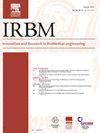Objective Assessment of Pull Test Scores in Parkinson's Disease Under Dynamic Conditions
IF 4.2
4区 医学
Q1 ENGINEERING, BIOMEDICAL
引用次数: 0
Abstract
Background
Postural instability is considered one of the most incapacitating motor symptoms and a primary cause of falls in Parkinson's disease (PD), compromising patients' autonomy and well-being. The traditional clinical examination used to evaluate this symptom designed by pull test is difficult to standardize and is not sensitive to subtle but significant postural changes. Inertial measurement units have emerged as a portable and cost-effective solution to measure on-body patients' postural sway allowing them to obtain more sensitive metrics able to capture postural instability. However, further studies are required to monitor patients' postural conditions under dynamic conditions.
Methods
The proposed research focused on investigating the hypothesis of whether it is possible to differentiate between all the scores of the pull test through postural and gait metrics extracted from raw acceleration and angular velocity signals from the centre of mass of patients with PD acquired while performing basic daily tasks. A new cross-sectional study was conducted with 23 patients to determine which gait and postural-associated metrics are considered significant to distinguish between the different levels of pull test, and which metrics are more correlated with the pull test score.
Results
Achieved results showed that most of the estimated metrics can differentiate the pull test scores (, R). The duration of the activity, root-mean-square and range of motion of vertical and mediolateral angular velocity, as also most of the gait-associated metrics, presented the most significant differences in all trials which involved motion tasks, such as sitting, lying, walking and turning.
Conclusions:
Overall, promising results were achieved as the statistical analysis revealed that gait and postural metrics estimated under dynamic conditions were considered relevant to distinguish between the scores of the pull test.

目的评价动态条件下帕金森病患者的拉力测试得分
背景姿势不稳定被认为是最令人丧失能力的运动症状之一,也是帕金森病(PD)患者跌倒的主要原因,损害了患者的自主性和幸福感。传统的临床检查通过拉力测试来评估这一症状,但这种方法很难标准化,而且对细微但显著的姿势变化不敏感。惯性测量装置作为一种便携式、经济高效的解决方案出现,可用于测量患者的体位摇摆,从而获得更灵敏的指标,捕捉体位不稳定性。该研究的假设是,是否有可能通过从帕金森病患者在执行基本日常任务时从质心获得的原始加速度和角速度信号中提取的姿势和步态指标来区分拉力测试的所有得分。对 23 名患者进行了一项新的横断面研究,以确定哪些步态和姿势相关指标被认为对区分不同级别的牵拉试验具有重要意义,以及哪些指标与牵拉试验得分的相关性更高。活动持续时间、垂直和内外侧角速度的均方根和运动范围,以及大多数与步态相关的指标,在所有涉及运动任务(如坐、卧、行走和转身)的试验中都显示出最显著的差异。
本文章由计算机程序翻译,如有差异,请以英文原文为准。
求助全文
约1分钟内获得全文
求助全文
来源期刊

Irbm
ENGINEERING, BIOMEDICAL-
CiteScore
10.30
自引率
4.20%
发文量
81
审稿时长
57 days
期刊介绍:
IRBM is the journal of the AGBM (Alliance for engineering in Biology an Medicine / Alliance pour le génie biologique et médical) and the SFGBM (BioMedical Engineering French Society / Société française de génie biologique médical) and the AFIB (French Association of Biomedical Engineers / Association française des ingénieurs biomédicaux).
As a vehicle of information and knowledge in the field of biomedical technologies, IRBM is devoted to fundamental as well as clinical research. Biomedical engineering and use of new technologies are the cornerstones of IRBM, providing authors and users with the latest information. Its six issues per year propose reviews (state-of-the-art and current knowledge), original articles directed at fundamental research and articles focusing on biomedical engineering. All articles are submitted to peer reviewers acting as guarantors for IRBM''s scientific and medical content. The field covered by IRBM includes all the discipline of Biomedical engineering. Thereby, the type of papers published include those that cover the technological and methodological development in:
-Physiological and Biological Signal processing (EEG, MEG, ECG…)-
Medical Image processing-
Biomechanics-
Biomaterials-
Medical Physics-
Biophysics-
Physiological and Biological Sensors-
Information technologies in healthcare-
Disability research-
Computational physiology-
…
 求助内容:
求助内容: 应助结果提醒方式:
应助结果提醒方式:


